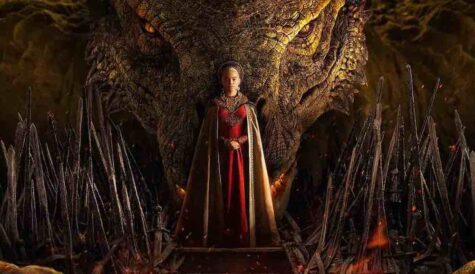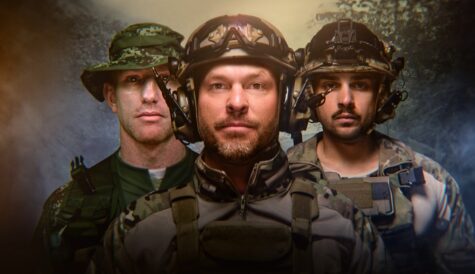Feature: Low-cost docs
Despite a dwindling number of slots, broadcasters are still investing huge sums in big-ticket documentary films and series. These projects invariably have to pull together various partners and are subsequently seen on free-to-air channels all over the world.
At the same time there are a growing number of producers that are working on projects that have tiny budgets by comparison and yet still get on-air, or seen by millions via digital outlets. The availability of low-cost equipment and modern productions techniques mean there has been a surge in the amount of factual content being produced.
"Anyone can be a documentary producer now, the cost of equipment, editing and such means people can achieve things that were impossible five or ten years ago," says Tim Sparke, director of UK indie distributor Mercury Media, which is selling a number of self-funded factual projects including World in Visions’ Dalai Lama film The Unwinking Gaze, which has been pickled up by CBC (Canada), NRK (Norway) and TV Polska among others. "That has in and of itself created a huge problem, there are too many docs. The challenge is getting distribution and accepting that only the top 1% are going to be possible theatrical vehicles and only the top 5% are going to make it on to TV."
Indie producers agree more content is being made. "I think in some ways this is the best of times and the worst of times," says filmmaker Lance Weiler. "The best because a lot of the tools and ways of working have been democratized. But the difficulty is it has created a bottleneck of content. There’s only so much the system can take and with more and more being made it is being overrun. There’s been an escalation of production but there’s more limited distribution."
Meanwhile, non-fiction broadcasters want to supplement the big-ticket series they co-fund with lower cost projects.
Richard Melman is acting managing director of The History Channel in the UK. About 25% of History’s top rated shows have budgets below £30,000 ($60,000) per hour. "It’s more difficult to make a good doc for £30,000 than £300,000 – with £300,000 if you are in trouble you can dig yourself out, but on £30k you have to not get into trouble in the first place," he says. "We have to know the idea can be done for that budget – we’re looking for the clever idea."
Clever in this case can mean forming the right partnerships. Ballista Media for example, teamed with UK body English Heritage for a 6x30mins series in which celebrities showcase their favourite houses, My Favourite Place. A second season has just been commissioned.
The producers of Africa’s Greatest Explorer, also for History, worked with Land Rover and the Kenyan Tourist Board. Travel, however, is usually one area that needs to be cut when there is a small budget. Other obvious ways to keep costs down include limiting use of archive footage and, where possible, music.
"The technology is available and it is possible to do it on your own, but it helps if you can afford not to pay yourself," says Tom Powers, executive producer at Toronto-based Open Door, which produced Independent America: The Two Lane Search for Mom&Pop. That was self-financed sold on DVD before Beyond Distribution brokered TV deals with the Sundance Channel, NHK and Canada’s Super Channel. Super Channel has now greenlit a follow-up film Independent America: Rising from Ruins that examines how big corporations and small businesses have reacted to the effects of Hurricane Katrina in New Orleans.
For producers that need archive material there are some low-cost options – such as public domain collections like that offered by Footage Farm – but generally, freely using archive is not part of the budget filmmakers’ repertoire.
Chicago-based indie producer and distributor Towers Production went out and found its own footage for Storm Stories, the 124x30mins weather series that is on Bravo and The Weather Channel and has been sold around the world. "The essence of the Storm Stories, unlike the ‘weather porn’ type shows, is that it is really story driven," explains Towers CEO William Fisher. "Rather than spend money on footage we went out and found people with personal photos and video."
Towers also keeps costs down by having its own post production facilities.
It is also cheaper than ever to use CGI, but cost-conscious producers are looking for alternatives. The History Channel has found using amateur reenactment groups is a good way to authentically recreate historical battles at a low cost.
Time is another area where low-cost productions must make savings. Melman says that History’s £30,000 docs are generally shot quickly. "We normally look at ideas that can be shot over two, three or four days," he says. "Forget eight weeks, [with that budget] no-one makes money."
On the wildlife side, Nat Geo programme sales arm National Geographic Television International has also worked with some smaller producers like Abyss Pictures, which made The Vanishing Dragon film about leafy seahorses. Nat Geo met Abyss at the AIDC conference in Australia and, having seen the one-off doc, advised the producers a re-edited version could work internationally."It was never a quality issue, it was more about making it sellable internationally," says NGTI head of acquisitions and coproductions Edwina Thring. "The language could have been better scripted for example." Thring says it is open to coproducing and distributing low-cost shows, although only in HD. "The most important thing to us is to have a strong story – it doesn’t have to have a big budget."
Working with broadcasters can be challenging for producers, especially if they have a particular vision, notes Agnes Varnum, who works at The Austen Film Society by day and writes the ‘doc it out’ blog."There are cable channels, and if they work with you they will give you the whole budget and that can be a good way to go," she says. "But [filmmakers] have their own vision and this doesn’t always fit with what the broadcaster wants – but they’re like, ‘We’re paying for it, this is how it is done’."
The oversupply of content and lack of slots make getting straight on to TV tough. But low barriers to entry, non-exclusive deals and numerous outlets make digital distribution increasingly attractive for factual producers. As well as peer-to-peer services like Joost and Babelgum there are specialised broadband channels like firstscience.tv from Pioneer and joingthedots.tv from Mercury Media, which has teamed up with UK newspaper The Independent.
There is also Cinelan, which is backed with private equity cash and was set up earlier this year to support the production and distribution of short-form factual content, particularly on digital platforms.
Al Gore-backed, part user generated, Current TV is a broadband and linear channel TV channel. Distributed in the US and UK, it will soon launch in Italy. It offers filmmakers a chance to upload ‘pods’ to its website and in the UK will pay between £300 and £1000 for the content, which can run to a maximum of eight minutes, if it decides to run it on its linear TV channel.
Producers have to sign away the rights in perpetuity – the UK terms of trade do not apply to cable channels – if they want their pods on TV although they do get a non-exclusive license to re-use the footage, which is important as some producers want to use their pods as backdoor pilots.
"We’re finding people are uploading short versions when they are looking for funding for a longer film," says Emily Renshaw Smith, manager of development and production at Current’s viewer-created content division VC2. "There are several instances whereby pods have been created as calling cards to get further work."
There are also digital festivals springing up. Lance Weiler has teamed with some other DIY filmmakers to create the Discovery and Distribution digital festival From Here to Awesome. "We’re trying to turn filmmakers on to web 2.0 to show them how to build audiences," Weiler says. "We want to lay the foundation for a new system of discovering and distributing work. For filmmakers now, it’s not just about the distribution and aggregation of their content, but dealing with the distribution of the audience," Weiler says.
If some filmmakers are setting out to produce factual projects on a shoestring, others just happen to find themselves with such valuable footage that a TV show becomes a natural follow on. That was the case with Jason Schlosberg, one of the two safari-goers that shot the Battle at Kruger. The inter-species battle took place at the Kruger National Park, South Africa, in September 2004 and was captured by amateur photographer Schlosberg and David ‘Buzz’ Budzinski.
"David and I had been out together the day before and shared a guide and then went out again," explains Schlosberg. "During the last hour on the second day we saw that there were buffalo at one end of where we were and lions at the other. We waited for an hour and got a lot of footage and edited it down to eight minutes. That footage then sat around for a couple of years."
It was only when Schlosberg put the video on YouTube and there had been 300,000 hits within two weeks – there have now been over 29 million – that he realised what he had and formed an official partnership with Buzz.
Nat Geo US was called following the phenomenal YouTube response and LA-based production company Creative Differences Television was recruited to make the TV show, Caught on Safari: Battle at Kruger. The show went out in May and follows Schlosberg and Buzz as they go back to Kruger and analyses the battle with the help of wildlife experts. Schlosberg’s own company, Negative Space, is planning to distribute the show when Nat Geo’s period of exclusivity runs out.
Alison Millar provides another example of making good use of footage already shot. She lived with and shot Michael Cleary – ‘Ireland’s Famous Singing Priest’ – while studying at The National Film School.
That provided the raw material for The Real Father Ted, which traces Cleary’s life and the scandal that erupted after his death in 1993. Tern TV-produced the authored doc, which had a budget of £150,000, and BBC Worldwide is distributing.
The original footage had been consigned to an attic before being unearthed and shown to broadcasters. Millar then chased down the original characters that were still alive and put together a one-off doc. The 1x86mins version, under the title At Home with Cleary’s, delivered a 46% share on RTE earlier this year. A 1x60mins version will air on BBC Four in the UK as part of the Storyville strand. The show won an Irish Bafta and there is also a 1x73mins festival version.



